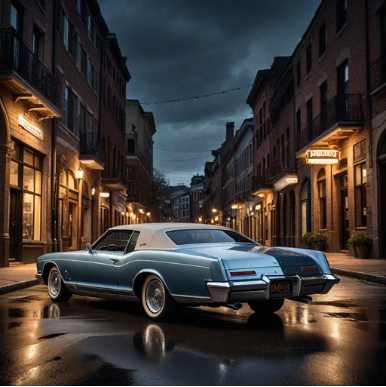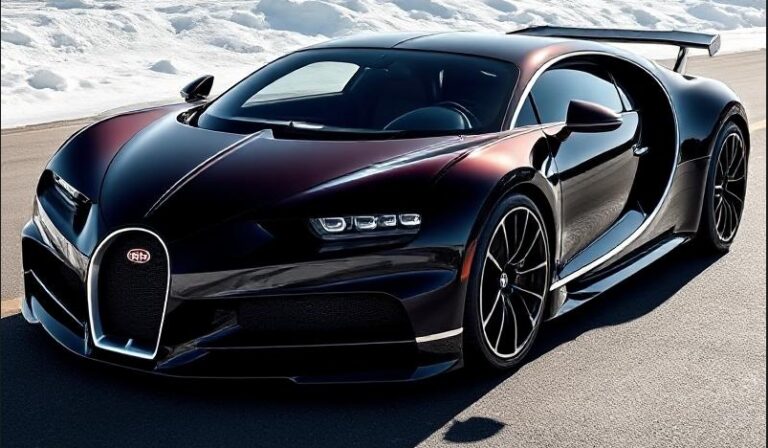The Unsung Workhorse: A Complete History of the Holden Combo
In the vast and rugged landscape of Australian commerce, dominated for decades by V8 utes and formidable one-tonne vans, the notion of a small, car-based commercial vehicle seemed almost quaint. Yet, for over two decades, one such vehicle carved out an indispensable niche for itself, becoming the quiet achiever in the background of Australian business. This is the story of the Holden Combo, a vehicle whose evolution is a fascinating case study in automotive globalization, badge engineering, and the changing demands of the modern workforce. From its quirky German roots to its robust Italian finale, the Combo was the little van that could.
Generation 1: The SB Combo (1996 – 2002) – The Corsa Connection
The Holden Combo first appeared on Australian shores in 1996, at a time when Holden’s portfolio was heavily influenced by its German counterpart, Opel. The first-generation Combo, designated the ‘SB’ series, was a direct rebadge of the Opel Combo B, which itself was based on the popular and well-regarded Opel Corsa B city car. This shared parentage was immediately obvious; from the front bumper to the B-pillar, the SB Combo was identical to the Holden Barina (SB), which was also a rebadged Corsa.
This design choice gave the Combo a friendly, approachable face, characterized by the Corsa’s soft, rounded headlights and diminutive grille. Aesthetically, it looked precisely like what it was: a small hatchback that had a tall, cavernous cargo box seamlessly integrated into its rear half. This high-roof rear section was the Combo’s raison d’être, offering a surprising amount of utility in a compact footprint. The rear was accessed via a pair of asymmetric ‘barn doors,’ a practical touch that allowed for easy loading in tight city laneways and loading docks. The larger door contained the number plate and could be opened independently for quick access.
Throughout its six-year production run in Australia, the SB Combo was offered in a single, straightforward trim level. There were no confusing options or deluxe packages; it was a tool for a job. Power came from a single engine choice: Opel’s 1.4-litre, 8-valve, four-cylinder petrol engine (C14NZ). Mated exclusively to a five-speed manual transmission, this engine produced a modest 60 kilowatts of power and 110 Newton-metres of torque.
While these figures were never going to win any traffic light sprints, they were perfectly adequate for the Combo’s intended purpose. Its light kerb weight and car-like underpinnings made it nimble and incredibly fuel-efficient, ideal for couriers, florists, caterers, and tradespeople whose work was confined to dense urban environments. Standard features were sparse, reflecting its utilitarian focus: power steering was standard, but air conditioning was a dealer-fitted option, and safety features were limited to the basics of the era.
The SB Combo’s key selling point was its cargo capacity. Despite its Barina-sized footprint, it offered a generous 2,830 litres of cargo volume and a payload of around 540 kg. For businesses that needed more space than a sedan’s boot but couldn’t justify the running costs or physical size of a Ford Transit or Toyota HiAce, the Combo was a revelation. It was easy to park, cheap to run, and surprisingly practical, quickly earning a reputation for reliability and low-cost ownership.
.

.
Generation 2: The XC Combo (2002 – 2012) – Maturity and Longevity
In 2002, Holden introduced the second-generation XC Combo. Following the established formula, it was a rebadged version of the new Opel Combo C, which was based on the more angular and mature Corsa C platform. This new model represented a significant step up in terms of design, refinement, and features.
The friendly, rounded look of the SB was replaced with a sharper, more contemporary design. The front end was again shared with the corresponding XC Holden Barina, featuring larger, more geometric headlights and a cleaner grille design. The integration of the cargo box was even more successful on the XC model, resulting in a cohesive and professional appearance. The asymmetric barn doors at the rear were retained, acknowledging their popularity with owners of the previous generation.
Initially, the XC Combo was launched with a 1.6-litre, 8-valve petrol engine (Z16SE) that produced a healthier 64 kW. This was again paired with a five-speed manual transmission. However, the most significant update came in 2005 with a mid-cycle refresh. This update brought a subtle facelift, including a new chrome-accented grille, but the biggest change was under the bonnet. The 1.6-litre engine was replaced by Opel’s more advanced 1.4-litre ‘Twinport’ 16-valve four-cylinder engine (Z14XEP). This new engine produced a superior 66 kW and offered improved fuel economy and lower emissions thanks to its variable intake manifold technology.
Like its predecessor, the XC Combo was offered primarily as a single model. However, over its remarkably long ten-year lifespan, its standard features list gradually evolved. A driver’s airbag became standard, followed by the inclusion of Anti-lock Braking System (ABS). Air conditioning also became a more common standard feature in later model years. This slow but steady improvement in safety and comfort reflected the changing expectations of the commercial vehicle market.
The XC Combo perpetuated and solidified the reputation established by the SB. It became a ubiquitous sight in Australian cities, a trusted workmate for thousands of small businesses. Its car-like handling, comfortable cabin (by commercial standards), and excellent visibility made it a pleasure to drive in congested traffic. The cargo bay remained the star, offering up to 3,200 litres of space, and its flat floor and near-vertical sides made it exceptionally easy to load and organise. Its decade-long production run is a testament to the soundness of its design and its unwavering popularity in its segment.
Generation 3: The XD Combo (2012 – 2018) – An Italian Alliance
By the early 2010s, the automotive landscape within General Motors had shifted. The pipeline of Opel-sourced vehicles for Holden was changing, and the Opel Combo D (based on the Corsa D) was not slated for Australian import. This left Holden with a gap in its commercial lineup after the long-serving XC was finally retired. The solution came not from Germany, but from Italy, through a platform-sharing agreement between GM and Fiat.
In 2012, Holden launched the all-new XD Combo. This time, the van was a rebadged version of the award-winning Fiat Doblò (second generation). This marked a radical departure from the Combo’s Corsa-based heritage. The XD was fundamentally a different vehicle: larger, more utilitarian in its design, and aimed at a more serious commercial market.
The car-like front end was gone, replaced by a purposeful, van-specific design with a short, steep bonnet, a massive windscreen, and large, high-mounted headlights. This “cab-forward” design maximised interior and cargo space. The XD Combo was also physically larger in every dimension, signalling a move to compete more directly with rivals like the Volkswagen Caddy and Renault Kangoo.
This shift in strategy was most evident in the models and drivetrains offered. For the first time, the Combo was available in two different wheelbase lengths:
- Short Wheelbase (SWB): Offered a substantial 3,400 litres of cargo volume.
- Long Wheelbase (LWB): Pushed capacity to an enormous 4,200 litres, placing it in a new class of utility for the Combo nameplate.
Perhaps the most significant change was the complete switch from petrol to diesel power. This decision aligned the Combo with European commercial vehicle trends, prioritising low-end torque and long-distance fuel economy. Two engine options were available:
- 1.6-litre ‘MultiJet’ Turbo Diesel: This was the standard engine, producing 77 kW and a very useful 290 Nm of torque. It was available with a six-speed manual transmission.
- 2.0-litre ‘MultiJet’ Turbo Diesel: An optional upgrade, this more powerful unit delivered 99 kW and 320 Nm of torque, making it ideal for heavier loads. It was also paired with a six-speed manual.
An automated manual transmission, which Holden called a ‘Manual Transmission with Automatic’ (MTA), was also offered with the 1.6-litre engine for those who preferred two-pedal driving in city traffic.
The XD Combo was a far more sophisticated and capable work vehicle. Standard safety features were comprehensive, including Electronic Stability Control (ESC), traction control, and multiple airbags. The cabin was more spacious and offered clever storage solutions, while the driving experience, though less car-like than its predecessors, was still comfortable and composed. It was a serious tool for serious work, capable of carrying a full-sized pallet in the LWB version and boasting a payload of up to one tonne.
The End of an Era and a Lasting Legacy
The Combo’s journey in Australia came to an end around 2018. Its discontinuation was a consequence of global automotive shifts; in 2017, General Motors sold Opel to the PSA Group (now Stellantis), effectively severing the engineering ties that had long supplied Holden with many of its vehicles. With the Fiat partnership also concluding, there was no logical successor for the Combo in the Holden lineup. The final XD models were sold, and the nameplate quietly disappeared, a precursor to the eventual closure of the Holden brand itself in 2020.
The legacy of the Holden Combo is that of an unsung hero. For over twenty years and across three distinct generations, it provided Australian businesses with a smart, efficient, and reliable alternative to larger, thirstier vans. It evolved from a quirky, Corsa-based runabout into a sophisticated, Italian-designed diesel workhorse, mirroring the growing demands for safety, efficiency, and capacity in the compact commercial sector. Today, thousands of Combos from all generations can still be seen diligently working on Australian roads—a testament to a simple yet brilliant concept, expertly executed.







